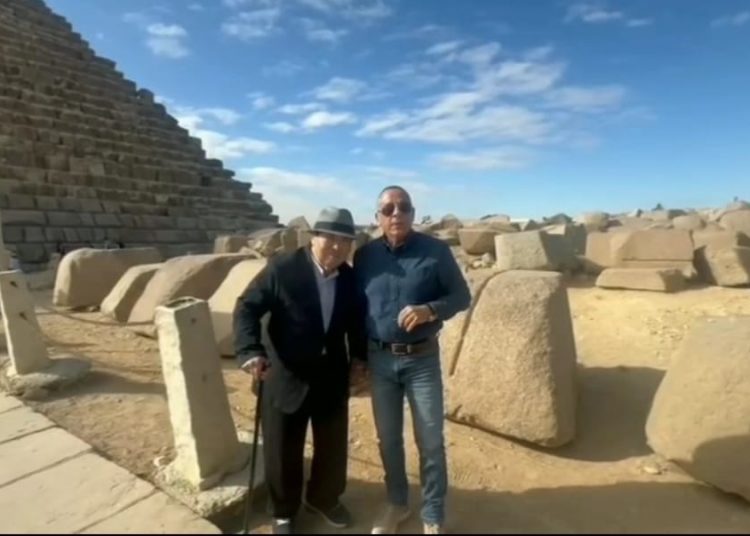A joint Egyptian-Japanese archaeological mission has begun studying and documenting the granite blocks that form the outer casing of King Menkaure’s pyramid, the smallest of the three Pyramids of Giza Plateau.
The mission is led by Mostafa Waziry, secretary-general of the Supreme Council of Antiquities, and Japanese Egyptologist, Yoshimura Sakuji.
Waziry described the project as the ‘project of the century’.
“This project is Egypt’s gift to the world,” he said.
He noted that studying and documenting the outer casing of King Menkaure’s pyramid coincides with the expected inauguration of the Grand Egyptian Museum later this year.
The project will seek to trace the original appearance of King Menkaure’s pyramid which was wholly constructed by the ancient Egyptians, including its complete outer casing.
According to Waziry, the outer casing of the pyramid used to contain 16 granite blocks.
However, only seven of these blocks remain until today, he said.
The project is expected to involve studying; restoring; documenting, and reassembling these blocks.
It will take place in several phases over a period of three years and include drawing; photogrammetry; documentation, and laser scanning.
These works will be followed by the actual reinstallation of the granite blocks, Waziry said.
He paid a visit to the Giza Pyramids area on Thursday to assess progress on the project.

During the visit, Waziry met a group of tourists from Costa Rica, to whom he explained the project. He also invited them to come back after its completion.
The tourists expressed admiration for the project and took photos in front of the third pyramid.
They also sent a message to their fellow Costa Ricans to visit Egypt, describing it as a safe and secure country.






Discussion about this post